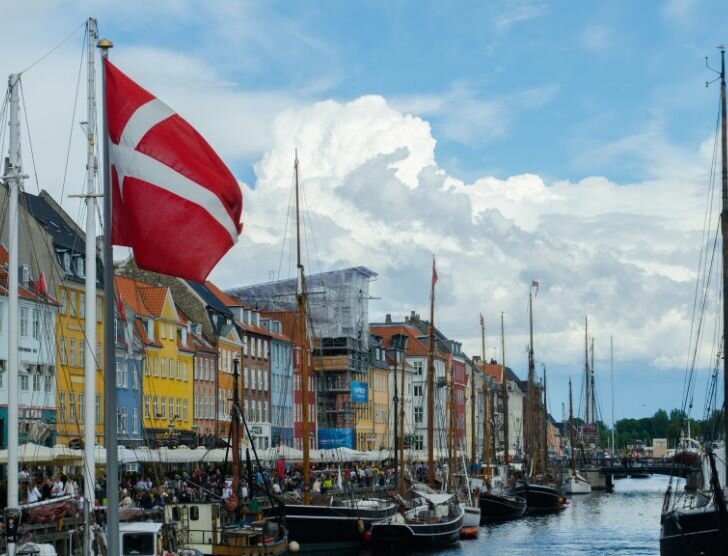Ribe is a town located in southwestern Jutland, Denmark. Ribe, considered the oldest Danish town (alongside Hedeby), is located in the Southern Denmark region (formerly Ribe County), in Esbjerg Municipality (formerly the seat of Ribe Municipality). Ribe is located in southwestern Jutland, approximately 52 km west of Haderslev and approximately 60 km north of the Danish-German border. The Ribeå River flows through the town and flows into Fanø Bay (the North Sea), a few kilometers west of the town.
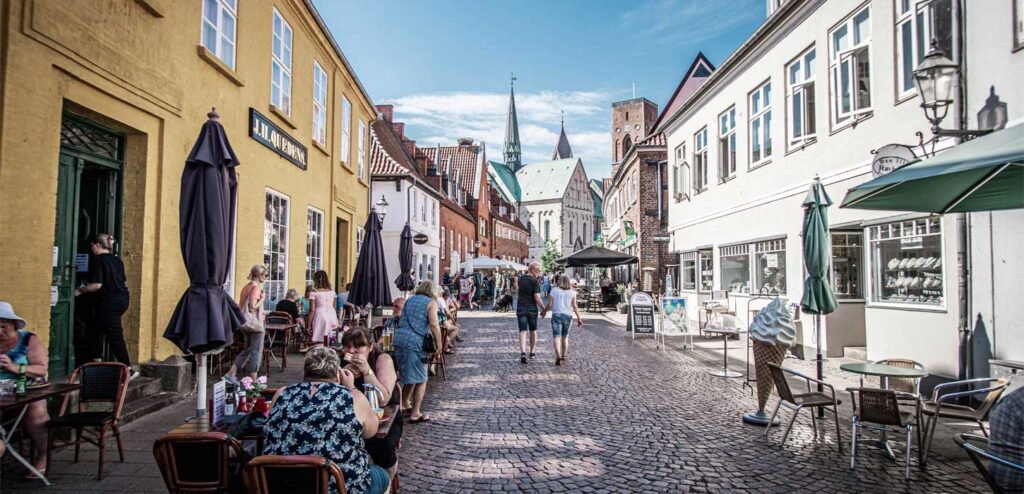
- Ribe is situated in a marshy area. The old town has retained its medieval character. It is surrounded by a moat, and the streets are narrow and cobbled. The town boasts numerous preserved historic buildings, particularly those constructed of half-timbered walls. Many of these are listed as historical monuments. A half-timbered wall is a type of frame wall, also known as a half-timbered wall, framed wall, or timber-framed wall (from the German word “Fachwerk”), filled with brick. It is often confused with a wattle and daub wall, i.e., a frame wall filled with clay-straw or clay-reed. Its wooden structure is visible, often impregnated, and can also be considered a decorative element. The brick sections of the facade, usually during the building’s use, could be plastered and whitewashed, giving them the appearance of a whitewashed half-timbered facade.
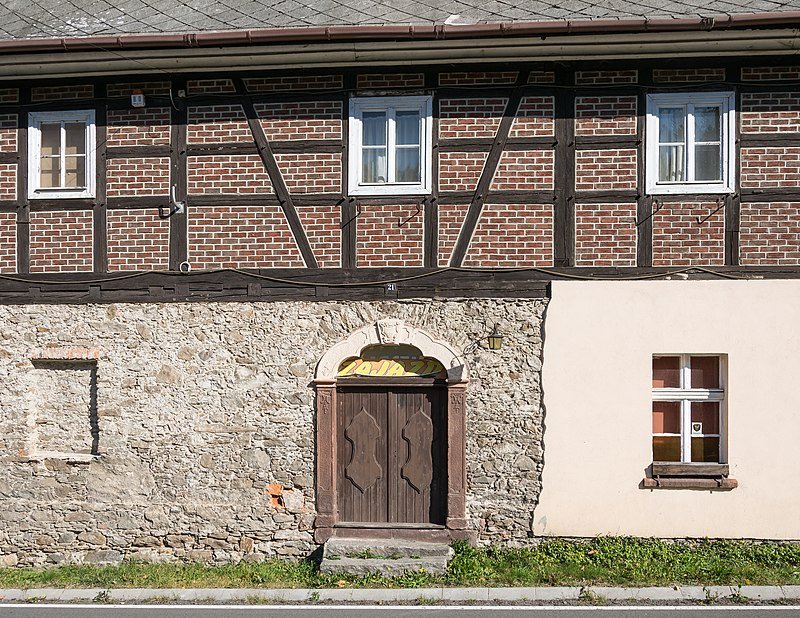
- Ribe Cathedral (Danish: Ribe Domkirke or Vor Frue Kirke Maria) is a church located in Ribe, the diocesan church of the Diocese of Ribe. It is the best-preserved Romanesque religious building in Denmark. It is also the oldest church in Denmark. Ribe Cathedral is a three-nave church, or five-nave if you count the outer chapels on both sides. It is 61.5 meters long (including the chancel, 20.4 meters) and 33.5 meters wide (including the transept). The cathedral has three towers, each different from the other. The largest is the square-shaped northern defensive tower, the so-called Borgertårnet (Townsmen’s Tower), measuring 53 meters, built in 1283 on the site of a collapsed stepped tower. This tower served as a watchtower. In 1594, its dome and spire fell off. A balustrade was built in their place. In 1599, the cathedral bell was returned to its original location. This tower serves today as a viewing point. The second tower is the lower, Romanesque Mariatårnet (St. Mary’s Tower), while the third tower is the steeple at the intersection of the naves.
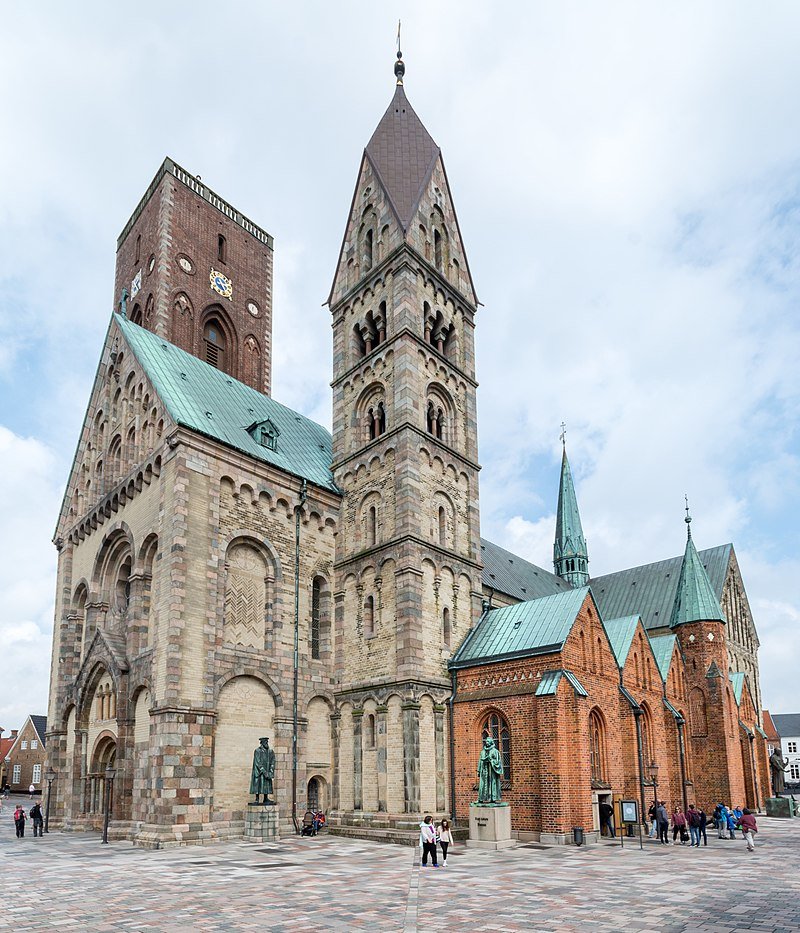
- St. Catherine’s Church in Ribe (Danish: Sankt Katharine Kirke or Sct. Catharinæ Kirke) is a church located in Ribe, east of the Old Town Hall. It is a parish church in the diocese of Ribe. St. Catherine’s Church was built along with the monastery by the Dominican order. After the Reformation in 1536, the monastery was closed, and the Dominicans were forced to cease their activities. The Dominican monastery, although it never again served a religious function, is today one of the best-preserved monastic complexes in Denmark. St. Catherine’s Church and the cathedral are the only two churches of the 13 built in Ribe before the Reformation to have survived to the present day.

- The Old Town Hall from 1496, which is the oldest existing town hall in Denmark.
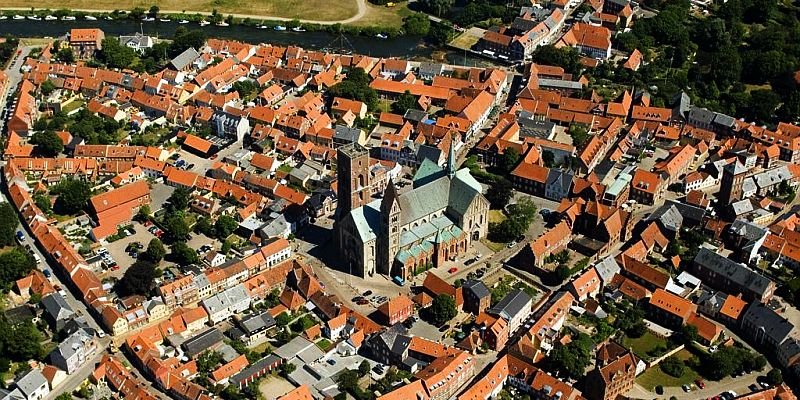
- The Ribe coat of arms visibly reflects the city’s history. A bipartite pole on a silver (in practice white) field features three blue lions wearing gold crowns. These were borrowed from the Danish coat of arms and symbolized the city’s affiliation with the Kingdom of Denmark and the royal character of the city, which was once the seat of the country’s rulers and a border town between the Kingdom of Denmark and the Duchy of Schleswig. The second field of the coat of arms depicts the red façade of the local cathedral, the symbol of the city, with golden crosses on the towers of St. Mary’s and the Burghers’ Church, and on the portico. The coat of arms was created before 1295 and was officially approved in 1938.
